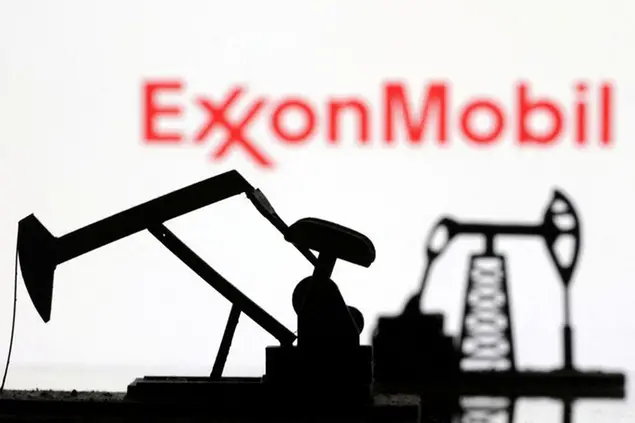PHOTO
Exxon Mobil said on Monday it expects crude demand to stay above 100 million barrels per day (bpd) through 2050, similar to today's levels, a forecast 25% higher than top European rival BP.
The stronger demand projected by the largest U.S. oil company in its latest global oil outlook underpins Exxon's production growth plans, the most ambitious among Western oil majors. It did not have a 2050 demand figure in its previous outlook released in 2023.
The company also painted a more somber view on global carbon emissions reductions than BP. Advancements in technology will allow for emissions reductions after 2029, compared to the middle of this decade according to BP.
Exxon plans to pump 4.3 million barrels of oil and gas per day this year, 30% more than U.S. top rival Chevron's current output. BP is cutting production to about 2 million barrels per day by 2030.
"Oil and gas demand have a very, very long runway and will continue to grow over the next few years," Exxon Economics, Energy and Strategic Planning Director Chris Birdsall told Reuters.
Exxon estimates electric vehicles will not significantly alter long-term global oil demand, as the world's population is expected to increase from 8 billion today to nearly 10 billion in 2050, adding to demand for energy.
If every new car sold in the world in 2035 were electric, crude oil demand would still be 85 million bpd, the same it was in 2010, it said. BP projects oil consumption will peak in 2025 and decline to 75 million bpd in 2050.
The estimates are more than triple the 24 million bpd of crude the International Energy Agency (IEA) says would allow the world to reach net-zero emissions by 2050.
Exxon projects 67% of the global energy mix in 2050 will be supplied by oil, natural gas and coal, down from 68% last year.
The company said more investments in oil than are currently anticipated will be necessary as the world transitions to unconventional resources. Wells in these geological formations, such as U.S. shale, have a shorter production lifespan and exhibit a more pronounced natural decline, it said.
Exxon projects that without new investments, output would decrease by about 15% per year, a steeper decline compared to IEA's 2018 estimates of about 8% per year.
This rate of decline could cause oil prices to quintuple, with global supply plummeting to 30 million bpd as early as 2030, according to Birdsall.
"Global oil and natural gas supplies would virtually disappear without continued investments," Birdsall said. "The biggest reason for the change is the shift to more short-cycle unconventional assets."
(Reporting by Sabrina Valle; Editing by Jamie Freed)
